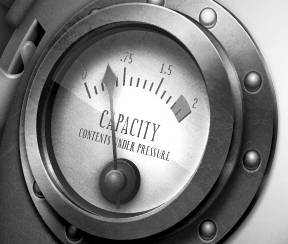Developing Special Interest Websites
This site goes back to the Nineties. Our page template was set as a table. We got clever designing our header with images and text set in another table. We positioned things by nesting tables inside tables and thought we were super cool. No, we really did.
We decided we could make it better with scrolling banners, news tickers, page counters and clocks that loaded pretty graphics for each digit, all driven by client-side Java script pinging away to the server. Man, just how cool were we?
Not very. Each ping got in the way of that one important call to the over-worked server. The one that got the content. We know now content is king. End of story. Fin.
Back then, it was a dial-up world. Just outside the city, the best connection we ever got was 33k and that was very early in the morning when you hoped you had the phone network to yourself. Page loads were clunky and slow. The few users we had told us they could not wait for all the clever stuff to load. We ignored them because we thought we knew better.
Build It Well And They Will Come
We learned about CSS, DIV, UL and LI tags. Google was born and started giving away ideas to build better, simpler, cleaner websites. If they want to help, we could try listening?
We learned about KISS - Keep It Simple, Stupid. We found making a website simple was the hardest part. We stripped out code to the point where we wonder how this site stays together.
We made Google love us. Other search engines are available, but Google really want you to succeed and in any case what they do now the others soon follow.
We looked at other browsers. Internet Explorer was the boss, but the competition looked at the ever-evolving Web Standards and thought if they stick to the standards and we design to the standards, then the web is a better place for all of us.
We watched the rise of the tablet and smart phone and found that accommodating them was not too hard with CSS media-queries and HTML5. What we learned designing for dial-up was all you needed to know for the slower mobile connections. Actually, it was good fun and Google Analytics showed it was all worth it.
That Was Then But This Is Now
Let's stop kidding ourselves. This is just a hobby site about shortwave radio. Although shortwave is still needed in developing countries, we would sooner spend our money on some online device rather than on a new shortwave receiver. Stations are closing all the time, even less for a new listener to hear and another reason for old-timers to switch off the radio and listen to what remains online.

We saw the falling visitor numbers as a challenge. We took up syndication of BBC Content because they wanted us to use their stuff to build our stuff and by listing all their online radio programmes, it showed the traditional listener that the way content is delivered is changing. Now most of the hits here are new listeners looking for podcasts leaving the shortwave pages unread.
There is still some interest in shortwave. In fact, since we declared that we are putting all our radio notes in an archive, we seem to have found a new market. Heritage and archive research is the thing but nothing like the traffic we saw when radio listening on a radio set was king.
So what have we learned? You can build a really good website from a technical point of view but if the content is not relevant or interesting, then you can't expect big audiences.
And yes, we know there is still work to do on the design side but we know it will just be a labour of love. Our radio days are over, the audience is moving on and we are left with that one question you must ask when working on a special interest website. Who cares?